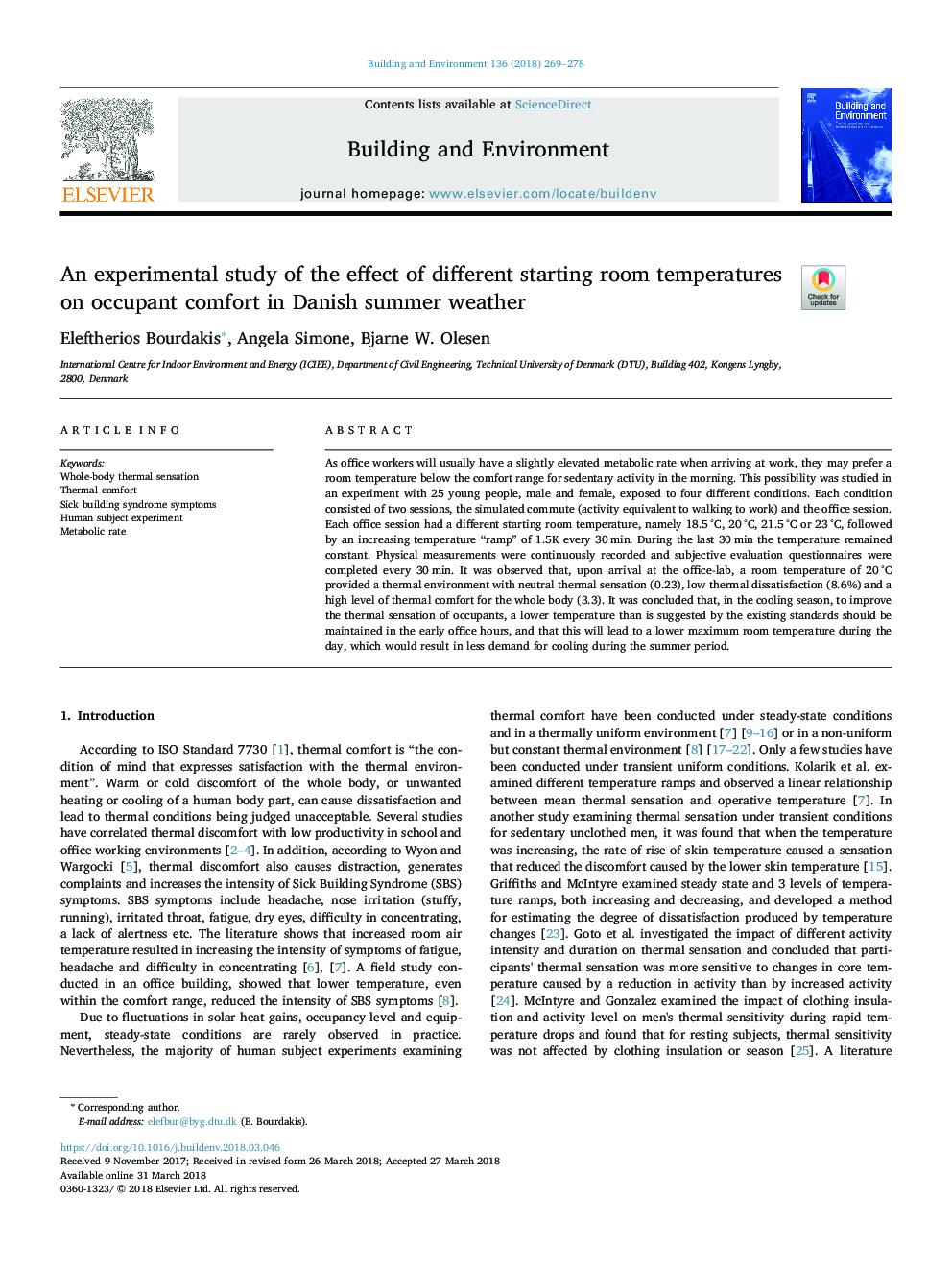| Article ID | Journal | Published Year | Pages | File Type |
|---|---|---|---|---|
| 6697514 | Building and Environment | 2018 | 10 Pages |
Abstract
As office workers will usually have a slightly elevated metabolic rate when arriving at work, they may prefer a room temperature below the comfort range for sedentary activity in the morning. This possibility was studied in an experiment with 25 young people, male and female, exposed to four different conditions. Each condition consisted of two sessions, the simulated commute (activity equivalent to walking to work) and the office session. Each office session had a different starting room temperature, namely 18.5â¯Â°C, 20â¯Â°C, 21.5â¯Â°C or 23â¯Â°C, followed by an increasing temperature “ramp” of 1.5K every 30â¯min. During the last 30â¯min the temperature remained constant. Physical measurements were continuously recorded and subjective evaluation questionnaires were completed every 30â¯min. It was observed that, upon arrival at the office-lab, a room temperature of 20â¯Â°C provided a thermal environment with neutral thermal sensation (0.23), low thermal dissatisfaction (8.6%) and a high level of thermal comfort for the whole body (3.3). It was concluded that, in the cooling season, to improve the thermal sensation of occupants, a lower temperature than is suggested by the existing standards should be maintained in the early office hours, and that this will lead to a lower maximum room temperature during the day, which would result in less demand for cooling during the summer period.
Keywords
Related Topics
Physical Sciences and Engineering
Energy
Renewable Energy, Sustainability and the Environment
Authors
Eleftherios Bourdakis, Angela Simone, Bjarne W. Olesen,
